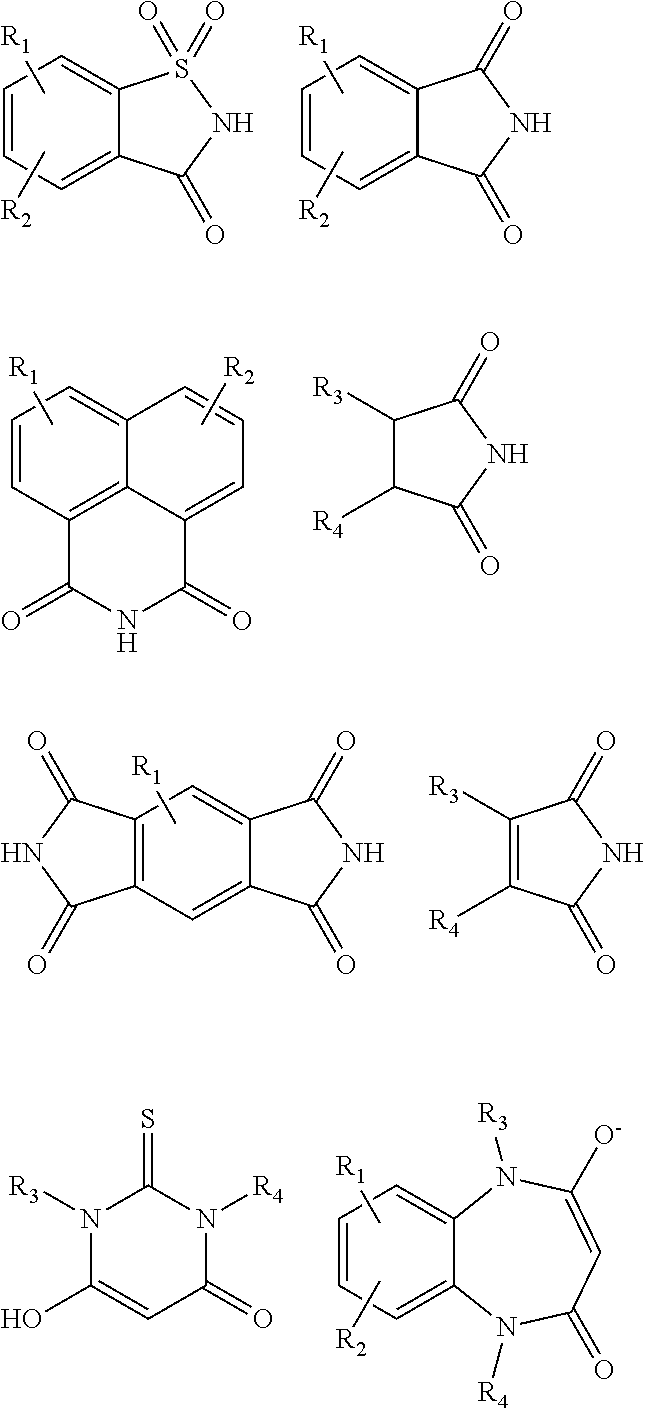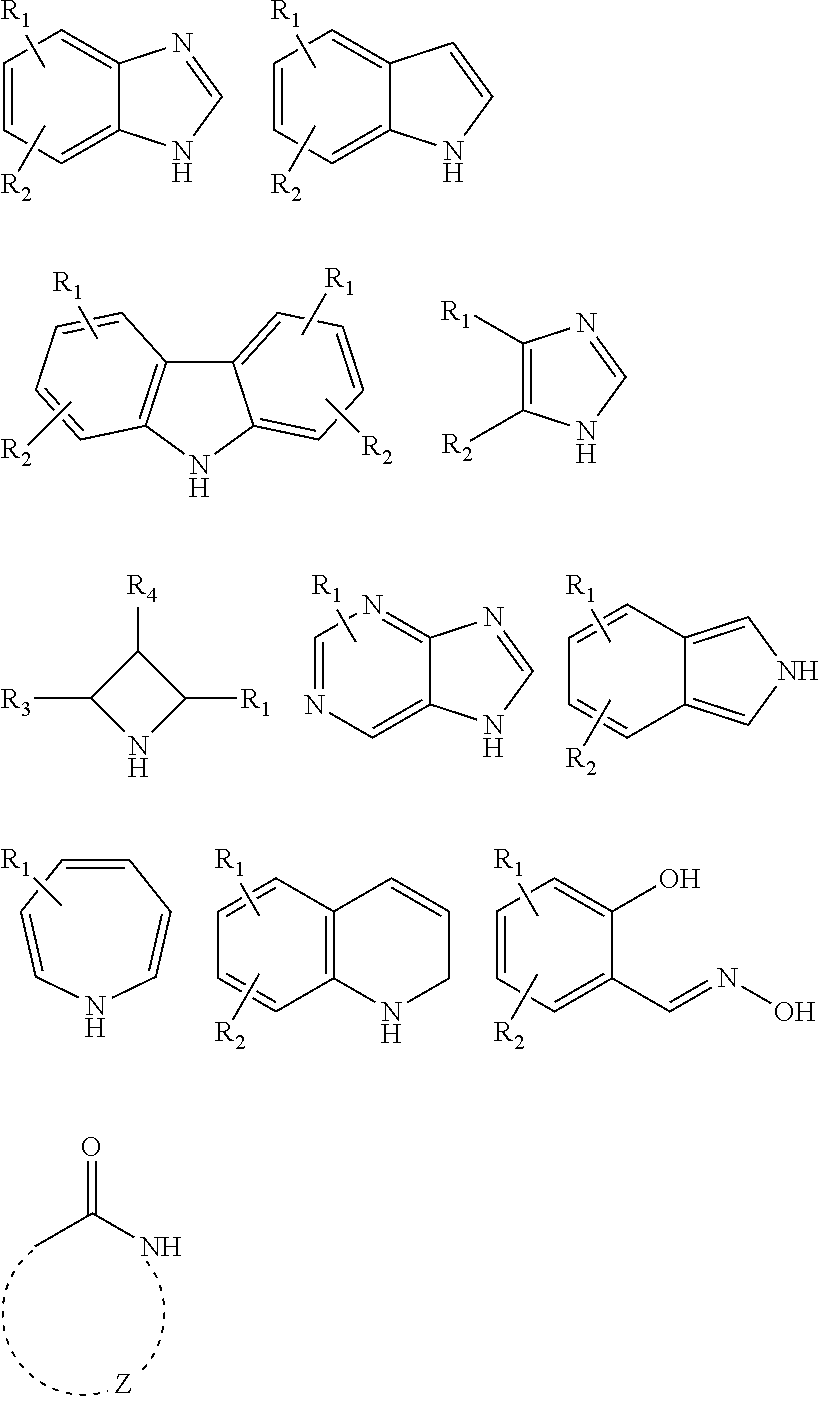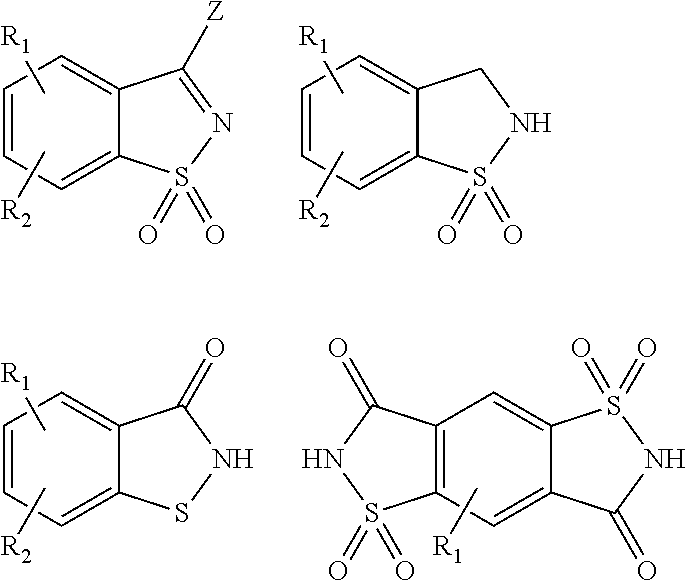Antimicrobial devices and compositions
a technology of antimicrobial devices and compositions, which is applied in the direction of prosthesis, catheters, peptide/protein ingredients, etc., can solve the problems of not all silver compounds are useful antimicrobial agents, silver ions are lost, and the oligodynamic effect is limited, so as to achieve low solubility, maintain antimicrobial activity over long periods of time, and resist discoloration
- Summary
- Abstract
- Description
- Claims
- Application Information
AI Technical Summary
Benefits of technology
Problems solved by technology
Method used
Image
Examples
example 1 cotton
Gauze
[0261]Cotton gauze with silver was prepared as follows: Sodium saccharinate (0.205 gm) was dissolved in 10 ml de-ionized water to which 1 ml of silver nitrate (1M) was added to form silver saccharinate precipitate. 2 ml of suspension was diluted with 3 ml of water and evenly spread on 2″×2″ cotton gauze (Curity brand from The Kendall Company, Mansfield, Mass.). The gauze was blotted to remove excess liquid and dried in oven at 40-45° C.
[0262]A. 3″×3″ cotton gauze (Curity brand from The Kendall Company, Mansfield, Mass.) was dipped in 10-12 ml of 0.1M silver nitrate solution. It was blotted on paper and dipped in 15 to 20 ml of 0.125 M sodium saccharin to precipitate silver saccharinate in and on the cotton fibers, blotted and dried at 70° C. for 0.5 h.
B. Gauze was made by the same procedure as in example 1A except it was dried in oven at 135° C. for 12 minutes.
C. Gauze was made by the procedure of Example 1A, except it was dried at 135° C. for 30 minutes.
D. Gauze material (3″×3...
example 2
Alginate Fiber Dressing
[0263]1 ml of silver saccharinate suspension prepared in Example 1 was diluted with 10 ml denatured ethanol to give a hazy solution. A 2″×4″ piece of alginate / CMC fiber dressing (Maxsorb brand, Medline Industries, Mundelein, Ill.) was soaked in the solution, gently blotted and dried in oven at 45° C. The resulting dressing was antimicrobial.
example 3 drain sponge
[0264]A drain sponge made of polyester and rayon (Avant brand, Medline Industries, Mundelein, Ill.) was soaked for 1-2 minutes in 30 ml silver nitrate solution (0.04 M) under ambient light, blotted with paper and then quickly soaked in sodium saccharinate solution (0.05 M) for 1-2 minutes. The sponge was blotted to squeeze out excess fluid, dried at 45° C. overnight to yield a slightly cream colored silver containing product.
PUM
| Property | Measurement | Unit |
|---|---|---|
| molar ratio | aaaaa | aaaaa |
| molar ratio | aaaaa | aaaaa |
| molecular weights | aaaaa | aaaaa |
Abstract
Description
Claims
Application Information
 Login to View More
Login to View More - R&D
- Intellectual Property
- Life Sciences
- Materials
- Tech Scout
- Unparalleled Data Quality
- Higher Quality Content
- 60% Fewer Hallucinations
Browse by: Latest US Patents, China's latest patents, Technical Efficacy Thesaurus, Application Domain, Technology Topic, Popular Technical Reports.
© 2025 PatSnap. All rights reserved.Legal|Privacy policy|Modern Slavery Act Transparency Statement|Sitemap|About US| Contact US: help@patsnap.com



